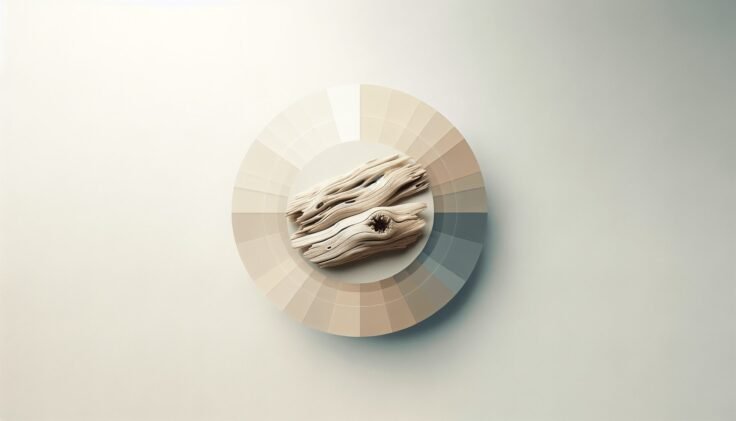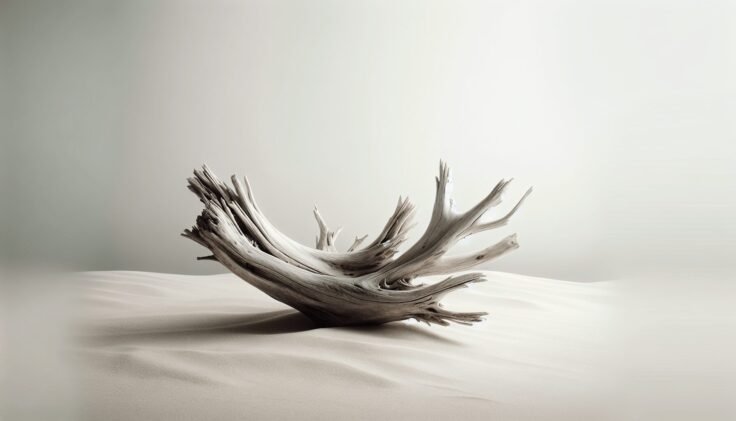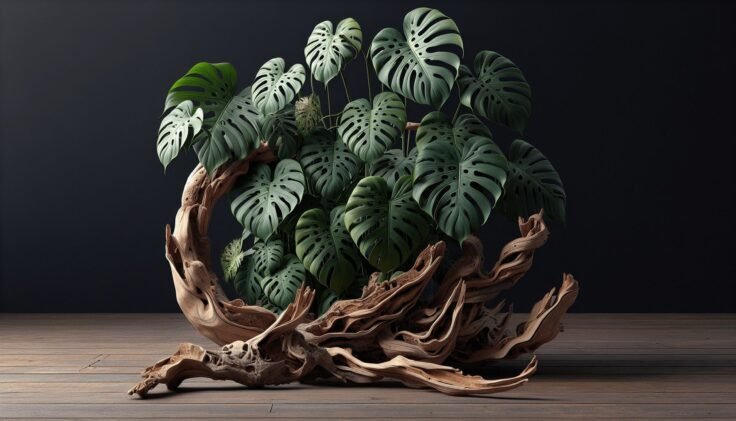Have you ever taken a walk along the shoreline and stumbled upon some exquisite pieces of driftwood and glistening agate stones? You’re not alone. These natural treasures captivate the curiosity and artistic imagination of many. Driftwood and agate may just be pieces of nature at first glance, but they hold fascinating stories and a wealth of possibilities for creative expression.
What is Driftwood?
Driftwood is essentially fragments of trees and branches that have been carried by rivers and eventually washed ashore by oceans or lakes. With time, water and sand shape these wooden pieces, giving them unique contours and textures. Often bleached by the sun and smoothed by the waves, each piece is distinct and has its own tale of travel and transformation.
The Journey of Driftwood
The journey of driftwood begins in forests where storms, natural erosion, or human activity can cause trees to fall into river systems. These water bodies act as natural conveyors, guiding the driftwood to distant shores. Along the way, the wood is worn down by the elements—water, salt, sand, and sun—leaving behind the weathered materials that capture our attention once they wash ashore.
Types of Wood Commonly Found as Driftwood
Here’s a brief look at some tree species commonly found as driftwood:
| Type of Wood | Characteristics |
|---|---|
| Cedar | Often lightweight and resistant to decay, has a pleasant aroma. |
| Pine | Softwood with varied grain, sometimes shows knots or interesting patterns. |
| Oak | Dense and heavy, with intricate grain patterns that become more pronounced when weathered. |
| Maple | Known for its smooth texture and lighter color. |
Each type of wood reacts differently to weathering processes, making collecting driftwood an exciting and varied experience.
What is Agate?
Agate is a form of chalcedony, a mineral of the quartz family, known for its fine grain and vibrant colors. Agates often appear as circular bands of color or delicate patterns that seem to swirl within the stone itself. These gemstones are valued for their beauty and have been used in decorative arts and jewelry for millennia.
Formation of Agate
Agates form when silica-rich water seeps into spaces within volcanic rock. Over time, the water evaporates, leaving behind layers of silica that crystallize in stunning patterns. The colors in agate come from mineral impurities, which are captured in the silica layers as they crystallize.
Collecting Agate
Finding agates is often seen as a treasure hunt. Beaches, riverbeds, and desert terrains are common locations where agates can be found. When searching for agates, look for stones with translucent bands or vibrant colors. They may be easy to spot due to their characteristic shine and banding.

Driftwood and Agate: A Match Made in Nature
The combination of driftwood and agate can create beautiful, natural works of art. Both items carry their own stories and intrinsic beauty, which, when united, inspire endless possibilities for creative pursuits. The contrast between the earthy, rugged look of driftwood and the smooth, polished appearance of agate creates exquisite balance and harmony.
Artistic Uses
Driftwood and agate are often used together in various artistic projects. Here are some ideas:
- Sculptures: Combining the fluid shapes of driftwood with polished agate can create dynamic sculptures that catch the eye.
- Jewelry: Driftwood makes a rustic yet elegant base for agate stones in necklaces, earrings, and bracelets.
- Home Decor: Driftwood frames accented with agate inlays provide stunning natural accents for mirrors or photographs.
Crafting Tips
When working with driftwood and agate, consider these tips to enhance your creative projects:
- Preservation: Clean driftwood thoroughly before use to prevent decay. Consider sealing it with a natural wax or oil to maintain its color and integrity.
- Cutting Agate: If you intend to cut agate, ensure you have the right tools, like a diamond saw, and wear protective gear to avoid injury and inhalation of dust.
- Balancing Design: Use the contrast in colors and textures to create a balanced and aesthetically pleasing piece. Let the unique characteristics of each material shine.
The Historical Significance of Driftwood and Agate
Beyond their beauty, both driftwood and agate hold historical significance across various cultures and periods. Their uses have evolved over the centuries, reflecting changing technologies and artistic trends.
Driftwood in History
Historically, driftwood has served many practical purposes. Coastal communities often used it as a resource for building and fuel. In some cultures, driftwood held spiritual significance, believed to carry messages from the gods or to possess protective qualities against evil spirits.
Agate Through the Ages
Agate has enchanted people for thousands of years. Ancient civilizations, including the Greeks and Romans, carved agate into decorative items and amulets, believing it had protective and talismanic properties. In more recent times, agate has become popular in the crafting of fine jewelry and artistic pieces.

Driftwood and Agate in Modern Design
Today, driftwood and agate are embraced by modern artisans and designers looking to add a touch of natural elegance to their works. Their organic appeal aligns well with current trends that favor sustainability and the use of natural materials.
Driftwood: Key in Eco-friendly Design
In interior and exterior design, driftwood is cherished for its eco-friendliness and ability to evoke a sense of tranquility and connection with nature. It’s commonly used in furniture, wall art, and garden sculptures.
Agate: From Luxury to Rustic
Agate’s versatility allows it to fit seamlessly into both luxury and rustic design styles. Its vibrant colors and intricate patterns are used in countertops, tableware, and even flooring. The juxtaposition of agate with raw materials, like driftwood, enhances the beauty of both.
Final Thoughts: Your Driftwood and Agate Creations
Whether you’re an artist, a hobbyist, or simply someone who enjoys the beauty of nature, driftwood and agate offer endless possibilities for creativity and expression. By incorporating these materials into your projects, you not only create visually compelling pieces but also connect with nature’s timeless stories and rhythms.
Embrace the journey of driftwood and the formations of agate as you create pieces that are as rich in narrative as they are in beauty. Let your imagination be guided by the unique charm of these natural wonders.
May your creations reflect not just the physical beauty of driftwood and agate, but also the deeper connection and appreciation for the journeys they represent.




















